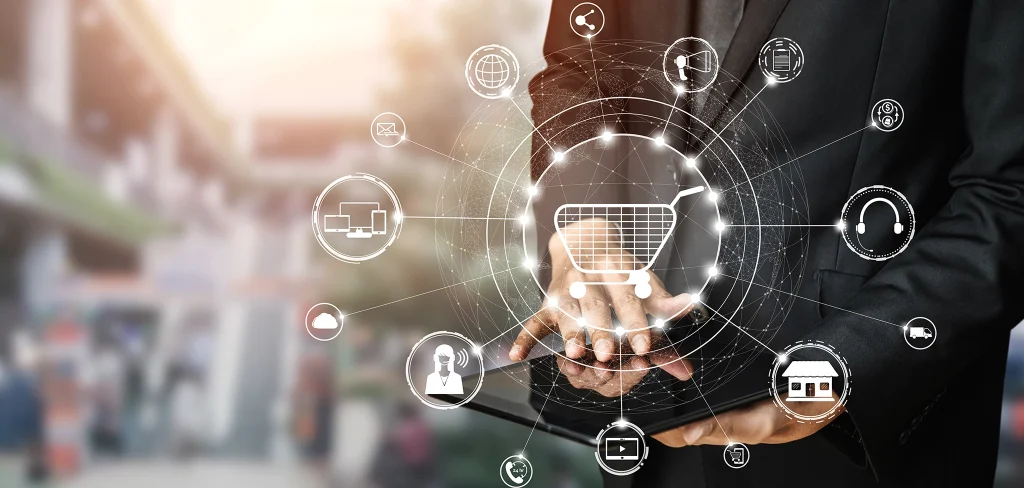The way customers interact with brands today is anything but linear. Someone might see an Instagram ad during breakfast, browse your website at lunch, click an email in the afternoon, and walk into your store after work. They expect each interaction to feel connected—like your brand remembers who they are, what they’ve seen, and what matters to them. When the experience feels disjointed, the magic is gone. When it’s seamless, loyalty grows.
That’s where a Digital Experience Platform (DXP) comes in. Instead of managing each channel in isolation, a DXP gives you one place to design, deliver, and personalize experiences everywhere your customers are. For marketers who want to do omnichannel right, it’s the missing link.
Why Omnichannel Has Become Non-Negotiable

The days of customers following a straight path from awareness to purchase are long gone. Today, they weave in and out of online and offline touchpoints, often making decisions based on how consistent and relevant their interactions feel. A conversation that starts on social media might continue via email, shift to a live chat, and end at a physical checkout counter.
This behavior puts pressure on brands to maintain continuity. Customers expect you to remember them—not just their name, but their preferences, purchase history, and even the conversations they’ve had with your team. If you miss the mark, they won’t just feel mildly inconvenienced; they may abandon the purchase entirely or switch to a competitor who “gets” them.
Beyond customer expectations, there’s a hard business case for omnichannel. Studies consistently show that shoppers engaging with brands across multiple channels spend more, have higher lifetime value, and are more likely to recommend those brands to others. In other words, a disconnected experience isn’t just a missed opportunity—it’s a direct hit to revenue.
Unfortunately, achieving this level of integration is easier said than done. Most companies are still working with siloed systems—content in one platform, customer data in another, campaigns manually duplicated across tools. This patchwork approach makes it nearly impossible to keep up with the pace of today’s customer journeys. That’s why many organizations are turning to DXPs.
What a DXP Brings to Omnichannel Marketing

Think of a DXP as the control center for your brand’s digital presence. Instead of juggling multiple disconnected systems, you operate from a single, unified platform that manages the entire customer experience from content creation to delivery.
Here’s how that translates into real-world benefits:
- One content hub: Instead of creating assets separately for your website, mobile app, email, and ads, you store them centrally and reuse them anywhere with ease.
- Integrated customer data: A DXP merges behavioral, transactional, and profile information into one view so you can tailor experiences for individuals, not just audiences.
- Context-aware personalization: Deliver the right content to the right person at the right time—whether they’re browsing on a desktop, scrolling on mobile, or visiting your store.
- Coordinated channel delivery: Publish campaigns across every touchpoint without juggling multiple tools or risking inconsistencies.
This unified approach not only saves time but also ensures that your brand speaks with one voice everywhere.
The DXP Features That Make Omnichannel Work

To understand why DXPs are so effective, it’s worth looking at the core capabilities that make them stand out.
- Central Content Repository
All your text, images, videos, and layouts live in one structured library. You can make an update once and push it everywhere—no more tedious re-uploads. - Single-Customer Profile
Every interaction is captured in a single record. This makes it easy to see patterns and anticipate needs across every channel. - Personalization Engine
Set rules based on location, device type, purchase history, or real-time behavior. Content updates instantly when conditions are met. - API-First Architecture
A DXP can connect with your CRM, analytics tools, commerce platforms, ad networks, and even in-store systems. This makes integration seamless and scalable. - Multi-Channel Delivery
Whether it’s a mobile app, social post, email, or kiosk screen, the platform formats and delivers your content in the right way for each channel.
How It Looks in Action

Barleeblue helped a large healthcare investment group launch an integrated digital ecosystem unifying hospitals, clinics, teleconsultations, pharmacies, and insurers under one platform. The outcome was a completely seamless healthcare journey for patients. Appointments, prescription refills, specialist referrals—all accessible through a single, responsive interface. Real-time data sync meant schedules stayed accurate, patient records stayed current, and care teams stayed aligned across physical and virtual touchpoints. AI insights predicted patient needs post-treatment, while analytics revealed trends in health outcomes and patient engagement. That platform went on to become the country’s fastest-growing health app, with over a million downloads, driving both improved care and additional revenue via connected commerce operations.
How to Get Started with Omnichannel and a DXP

- Audit your channels and workflows. Identify where your content lives and how it’s being managed today.
- Map your customer journeys. Look for gaps or points where messaging feels inconsistent.
- Start with one pilot campaign. Test pushing one set of assets to multiple channels at once.
- Bring your data together. Connect customer interactions from every touchpoint into a unified profile.
- Automate context. Use simple rules—like showing a different offer to returning customers or changing content based on location.
- Measure across channels. Review engagement as a whole, not just per platform, and use those insights to refine your approach.
Power Omnichannel Marketing with Barleeblue

Omnichannel marketing isn’t just about being present on multiple channels—it’s about delivering experiences that feel connected, personal, and effortless. Without the right technology, that vision is hard to achieve. A DXP makes it possible by uniting your content, customer data, and delivery into one system that adapts to every channel.
As new touchpoints emerge—from voice assistants to AR shopping—this flexibility becomes even more valuable. The brands that succeed will be the ones that can deliver a consistent, personal experience no matter how or where the customer chooses to engage. If you’re serious about creating those experiences, now’s the time to explore what a DXP can do for your marketing strategy. Get in touch with us to schedule a free consultation.

